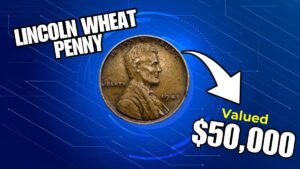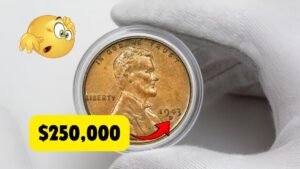Imagine a coin that is usually worth 25 cents suddenly being worth $3.3 billion on the internet. Anyone would be shocked to hear this. One such story has been doing the rounds on social media, YouTube and internet forums for some time now — “1976 Bicentennial Quarter sold for billions of dollars.” But is there any truth in it? Can an old quarter in your pocket really change your fortune?
This article will not only get to the bottom of this rumor but will also tell you what the real value of this historic coin is. Sometimes the value is not just hidden in money but in history and heritage.
1976 Bicentennial Quarter: A symbol of America’s 200th anniversary of independence
1976 was the year when America celebrated 200 years of its independence. To honor this historic occasion, the U.S. Mint released three special coin series—quarter, half dollar and dollar. These were called “Bicentennial Coins” and were temporarily engraved with special designs.
The Bicentennial Quarter became the most popular design. The reverse of the coin features a colonial drummer (a symbol of a changing America) instead of the traditional eagle, symbolizing the struggle for independence and military courage. Next to him are a torch and 13 stars, representing America’s original 13 colonies.
This design, along with the date “1776–1976,” signifies that the coin is a commemorative of the 200th anniversary of independence. Filled with history, art, and national pride, the coin was not just a piece of currency but a symbol of emotion and celebration.
How did the rumor spread that this coin was worth $3.3 billion?
This is where the twist in the story comes in. A rumor quickly took hold on the Internet that a rare copy of the Bicentennial Quarter had been sold for $3.3 billion. This claim not only piqued the curiosity of coin collectors but also sent ordinary people searching their piggy banks and pockets for the coin.
In reality, the rumor was the result of sensational headlines, clickbait videos, and misconceptions on the internet. Some people listed such coins on online platforms like eBay for billions, which many people believed to be true.
The reality is that no Bicentennial Quarter has ever sold for millions, or even billions. Yes, some extremely rare “error quarters” (such as coins minted in the wrong metal or with double images) can go for thousands or millions of dollars, but billions is just a fantasy.
So what is it worth? Money or history?
If you’re looking at coins just for money, you’ll probably be disappointed. But if you want to delve into the layers of history, art, and patriotism, the Bicentennial Quarter could prove to be a priceless treasure for you.
This coin transports you back to an era when America was proud of its democratic achievements. It can capture the political spirit, hopes, and national fervor of that era.
For collectors, this coin is a source of emotional connection and historical pride, not just profit.
Why are collectors interested in Bicentennial Quarters?
Each coin has certain characteristics that make it worth collecting. The Bicentennial Quarter also has several features that make it interesting:
- Mint Marks: “P” (Philadelphia), “D” (Denver), and “S” (San Francisco)—these indicate where the coin was minted. Proof coins from the “S” mint are particularly high quality.
- Condition: Uncirculated coins or special edition proof coins may be more valuable. The engravings are more pronounced and the designs are brighter.
- Error Coins: Sometimes minor technical errors occur in the minting process—such as double die strikes, casting in the wrong metal, or overstrikes. These error variants can be worth far more than normal coins.
But these values are usually limited to a few hundred or a few thousand dollars—not billions.
Education and Awareness Through the Bicentennial Quarter
This coin shows that coins are not just currency; they are also storytellers. Historians, teachers, and collectors use these coins in schools, museums, and educational exhibits to engage children and youth about history, math, and politics.
The Bicentennial Quarter can be used to teach children about the 1776 War of Independence, the American Revolution, and the founding of democracy.
This is why coin collecting is more than just a hobby; it is a learning tool.
Conclusion: Not worth billions, but priceless
In conclusion, it is fair to say that the 1976 Bicentennial Quarter is not worth $3.3 billion, but its historical and educational value is limitless.
This coin teaches us how a simple piece of metal can represent an era. The rumor may be false, but it has inspired millions of people to take an interest in coins—and that is an achievement in itself.
If you have a Bicentennial Quarter, hold on to it. It may not become a treasure trove of money in the future, but it is a symbol of memories and pride.
FAQs
Q. Is the 1976 Bicentennial Quarter really worth $4.4 billion?
A. No, that’s a myth. No Bicentennial Quarter has ever sold for billions. Most are worth face value unless they have rare minting errors.
Q. Why do some websites list this coin for millions or billions?
A. Many listings are clickbait or jokes. They do not reflect real market value or actual sale prices.
Q. Are Bicentennial Quarters rare?
A. No. Over 1.6 billion were minted. However, certain proof versions or error coins may hold collectible value.
Q. What makes a Bicentennial Quarter valuable?
A. Uncirculated condition, mint marks (like “S” for San Francisco), and rare errors such as double strikes or wrong metal planchets.
Q. Should I keep my 1976 Quarter?
A. Yes, especially if it’s in mint condition. While not highly valuable, it’s a great historical collector’s item.


